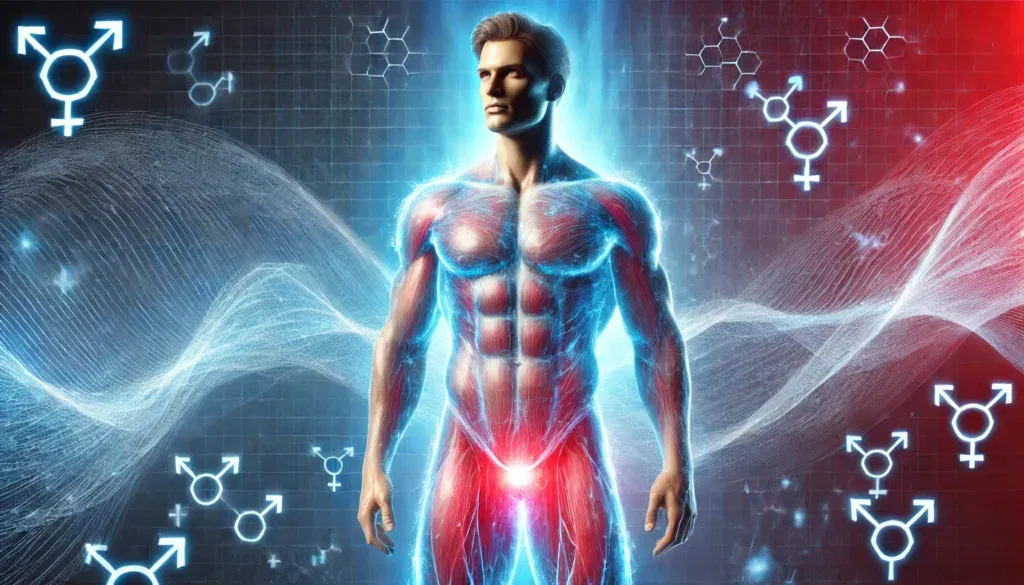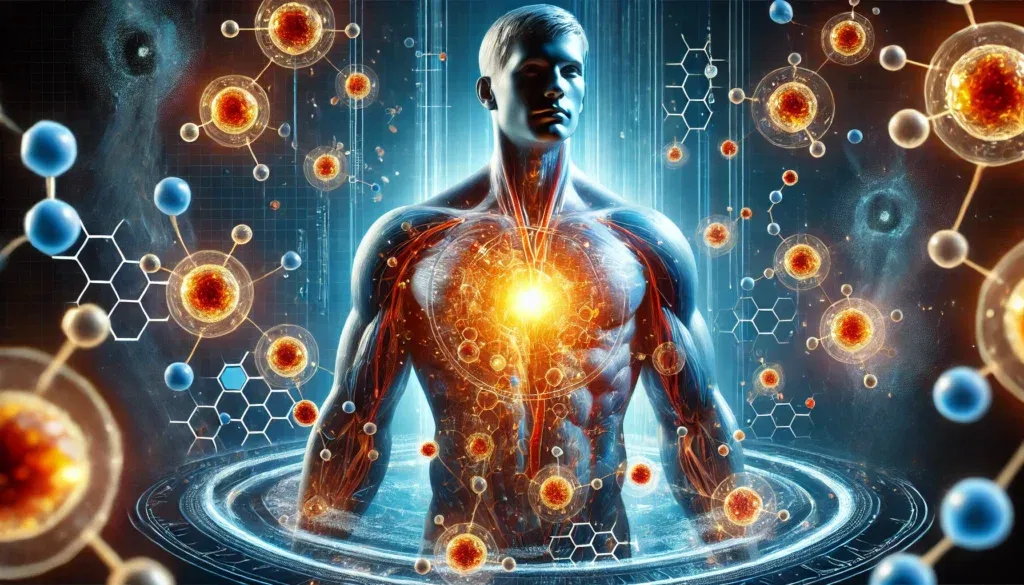The significance of testosterone in human physiology cannot be overstated. As a critical androgen hormone, it regulates various bodily functions, including muscle mass maintenance, bone density, mood stability, and libido. Given its importance, physicians often order testosterone blood tests to assess hormonal balance. However, understanding the results of these tests can be challenging due to the presence of multiple abbreviations and complex markers.
You may also like: How to Get Your Testosterone Levels Checked: Best At-Home and Lab Testing Options
The Importance of Testosterone Testing
Testosterone testing is essential for diagnosing and managing conditions such as hypogonadism, infertility, and androgen excess disorders. Both males and females require an optimal balance of testosterone to maintain overall health, though the normal ranges differ significantly between sexes. Blood tests measuring different forms of testosterone help provide a comprehensive view of hormonal status. Clinicians interpret these results in conjunction with symptoms, medical history, and additional laboratory findings to make informed treatment decisions.

Understanding Key Testosterone Blood Test Abbreviations
One of the primary reasons testosterone blood test results can be confusing is the use of medical abbreviations. These abbreviations represent different testosterone markers, each providing specific insights into hormonal function. The most common include TT (total testosterone), FT (free testosterone), BT (bioavailable testosterone), SHBG (sex hormone-binding globulin), and CFT (calculated free testosterone). Understanding these markers allows patients and healthcare providers to interpret test results more accurately and apply them to clinical decision-making.
Total Testosterone (TT) and Its Clinical Relevance
Total testosterone (TT) represents the complete amount of testosterone present in the bloodstream, including both bound and unbound fractions. This measurement is commonly used as an initial screening tool for testosterone-related disorders. While TT levels provide a broad view of hormone status, they do not necessarily reflect the amount of testosterone available for biological activity. Binding proteins, such as sex hormone-binding globulin (SHBG) and albumin, affect the fraction of testosterone that is free to exert physiological effects. Consequently, TT alone may not provide a complete picture, necessitating additional tests for accurate diagnosis.
Free Testosterone (FT): The Unbound and Active Hormone
Free testosterone (FT) refers to the fraction of testosterone that is not bound to SHBG or albumin. This portion is biologically active and capable of exerting androgenic effects on target tissues. Measuring FT is particularly useful when symptoms of testosterone deficiency persist despite normal total testosterone levels. FT levels can be affected by various factors, including age, obesity, and medical conditions such as diabetes. Since direct measurement methods can be unreliable, clinicians often use formulas to estimate FT based on TT and SHBG values.
Bioavailable Testosterone (BT) and Its Significance
Bioavailable testosterone (BT) includes free testosterone and the fraction loosely bound to albumin, which can readily dissociate and become active. This measurement is crucial because it provides a more accurate representation of the testosterone available for tissue utilization. The bioavailable testosterone range varies by age and sex, making it essential to consider reference values when interpreting results. A normal bioavailable testosterone level by age ensures proper physiological function, while deviations may indicate hormonal imbalances requiring medical intervention.
The Role of Sex Hormone-Binding Globulin (SHBG) in Testosterone Regulation
SHBG is a glycoprotein that binds to testosterone, rendering it inactive. High SHBG levels reduce the availability of free and bioavailable testosterone, whereas low SHBG levels increase the active hormone fraction. Various factors, such as liver disease, thyroid dysfunction, and obesity, influence SHBG levels, making it an important component of testosterone assessment. Calculated bioavailable testosterone accounts for SHBG variations, providing a more individualized assessment of hormonal status.
Calculated Free and Bioavailable Testosterone: A More Precise Approach
Since direct measurements of FT and BT can be inconsistent, calculated free testosterone (CFT) and calculated bioavailable testosterone (CBT) are often used. These calculations employ established formulas incorporating TT, SHBG, and albumin levels. This method enhances diagnostic accuracy, particularly in cases where total testosterone levels alone do not align with clinical symptoms. Understanding the relationship between these values is crucial for optimizing testosterone therapy and addressing underlying hormonal imbalances.
The Impact of High and Low Bioavailable Testosterone Levels
Both excessively high and low bioavailable testosterone levels can lead to significant health issues. In males, low bioavailable testosterone may manifest as fatigue, reduced libido, muscle loss, and depressive symptoms. Conversely, elevated levels may contribute to aggression, acne, and increased risk of cardiovascular disease. In females, high bioavailable testosterone is often associated with polycystic ovary syndrome (PCOS), whereas low levels may contribute to decreased energy, mood disturbances, and osteoporosis. Addressing these imbalances requires a comprehensive evaluation, including lifestyle modifications, medical interventions, and hormone replacement therapy when necessary.
Free and Weakly Bound Testosterone: Understanding Its Role
Free and weakly bound testosterone represents the sum of free testosterone and the albumin-bound fraction. This measure provides additional insight into the fraction of testosterone readily available for tissue action. Since albumin-bound testosterone dissociates easily in circulation, it is often considered functionally similar to free testosterone. Assessing this parameter helps refine treatment approaches, particularly in patients with conditions that affect SHBG levels.
Interpreting Testosterone Blood Test Results in Clinical Practice
Accurate interpretation of testosterone blood test results requires considering various factors, including age, sex, medical history, and concurrent health conditions. Reference ranges differ for males and females, and values decline naturally with age. For instance, normal bioavailable testosterone levels by age provide essential benchmarks for evaluating hormonal status. Clinicians must also assess symptoms and potential contributing factors such as metabolic syndrome, stress, and medication use when analyzing test results.
Optimizing Testosterone Levels for Health and Longevity
Maintaining optimal testosterone levels is vital for overall well-being. Strategies for achieving hormonal balance include regular physical activity, a nutrient-rich diet, stress management, and adequate sleep. In cases of significant deficiency or excess, medical treatments such as testosterone replacement therapy (TRT) or lifestyle interventions may be necessary. Regular monitoring through blood tests ensures that testosterone levels remain within a healthy range, supporting long-term health and vitality.

Frequently Asked Questions (FAQ) on Testosterone Bioavailable Levels
1. What factors influence testosterone bioavailable levels?
Testosterone bioavailable levels can be affected by several factors, including age, overall health, lifestyle choices, and underlying medical conditions. Hormone-binding proteins like sex hormone-binding globulin (SHBG) play a significant role in regulating free and weakly bound testosterone, impacting how much testosterone is readily available for the body to use. Certain lifestyle habits, such as poor diet, excessive alcohol consumption, and high stress, may lower bioavailable testosterone levels. On the other hand, resistance training and a balanced diet rich in healthy fats and protein can support normal bioavailable testosterone levels by age. Additionally, medications like corticosteroids and opioid pain relievers can influence testosterone availability in both men and women.
2. What is the ideal bioavailable testosterone range for men?
The ideal bioavailable testosterone range for men varies based on age, health status, and individual hormonal balance. Typically, bioavailable testosterone male levels should fall within 30-50% of total testosterone, depending on SHBG levels. Younger men generally have higher bioavailable testosterone levels, while aging and chronic health conditions can lead to a decline. Low levels may result in symptoms like fatigue, reduced muscle mass, and decreased libido, while excessively high levels could indicate underlying conditions such as testosterone-producing tumors. If you suspect an imbalance, a healthcare provider can evaluate testosterone free bioavailable and total ms levels through specialized testing.
3. How does bioavailable testosterone impact female health?
While testosterone is often associated with men, testosterone bioavailable female levels play a crucial role in women’s health as well. Women require a delicate balance of testosterone to support muscle strength, cognitive function, and sexual health. Low bioavailable testosterone in females may result in fatigue, mood disturbances, and decreased libido. However, excessive testosterone bioavailable high levels in women can lead to conditions like polycystic ovary syndrome (PCOS), which is associated with irregular menstrual cycles and excessive hair growth. Managing testosterone balance through lifestyle modifications and, in some cases, medical treatment can help maintain optimal health.
4. What is calculated bioavailable testosterone, and how is it measured?
Calculated bioavailable testosterone refers to the estimated portion of testosterone that is not tightly bound to SHBG and is available for the body’s use. This measurement is derived from mathematical formulas that take into account total testosterone, SHBG, and albumin levels. Unlike direct blood tests, calculated bioavailable testosterone provides a more practical approach to assessing hormone availability when SHBG levels fluctuate significantly. It is particularly useful in evaluating individuals with metabolic disorders, obesity, or hormone therapy patients, where total testosterone alone may not provide a clear picture of hormonal health.
5. What are the consequences of testosterone bioavailable low male levels?
Testosterone bioavailable low male levels can lead to several health complications, including reduced muscle mass, increased body fat, mood swings, and a decline in sexual function. Chronic low bioavailable testosterone may also contribute to osteoporosis, as testosterone plays a role in maintaining bone density. In addition to age-related decline, conditions such as insulin resistance, chronic stress, and liver disease can negatively impact bioavailable testosterone levels. Addressing these issues through dietary changes, exercise, and medical interventions can help restore hormonal balance.
6. How do free and weakly bound testosterone levels compare to bioavailable testosterone?
Free and weakly bound testosterone collectively contribute to bioavailable testosterone levels. Free testosterone is entirely unbound and readily available for use, whereas weakly bound testosterone attaches to albumin but remains accessible to the body. Together, these two forms determine the functional testosterone available to cells, influencing muscle growth, mood, and energy levels. Monitoring testosterone free bioavailable and total ms provides a more comprehensive understanding of hormone status compared to total testosterone alone.
7. How does aging affect normal bioavailable testosterone levels by age?
Aging naturally leads to a decline in normal bioavailable testosterone levels by age, primarily due to increased SHBG binding and reduced testosterone production. Men typically experience a gradual drop of about 1-2% per year after their mid-30s, while women see declines after menopause. This decline can result in reduced energy, cognitive function, and sexual drive. However, lifestyle choices such as regular strength training, proper sleep, and a balanced diet rich in micronutrients like zinc and vitamin D can slow down the process and support hormone health.
8. What lifestyle changes can help improve testosterone bioavailable levels?
Improving testosterone bioavailable levels naturally involves maintaining a healthy diet, engaging in regular physical activity, and managing stress. Strength training, particularly resistance exercises, has been shown to boost testosterone production. Foods rich in healthy fats, such as avocados, nuts, and fatty fish, support hormone synthesis. Additionally, reducing sugar intake and maintaining stable blood sugar levels can help regulate insulin, which in turn supports balanced testosterone levels. Finally, prioritizing sleep and minimizing exposure to endocrine-disrupting chemicals found in plastics and processed foods can contribute to hormonal balance.
9. What are the risks of having testosterone bioavailable high levels?
Testosterone bioavailable high levels can lead to various health concerns, including increased aggression, acne, and a higher risk of cardiovascular issues. In men, excessive testosterone may result in conditions such as polycythemia, a disorder characterized by increased red blood cell production, which can lead to blood clots. In women, high testosterone bioavailable female levels are often linked to hormonal disorders like PCOS, which can cause fertility issues and metabolic disturbances. If high testosterone levels are detected, it is essential to investigate underlying causes and adjust lifestyle or medical treatments accordingly.
10. When should someone get their testosterone levels checked?
Testing testosterone levels is recommended for individuals experiencing symptoms of hormonal imbalance, such as fatigue, decreased libido, mood swings, and unexplained changes in body composition. Men with suspected testosterone bioavailable low male levels should consider testing, especially if they have conditions like obesity, metabolic syndrome, or chronic illness. Women with irregular menstrual cycles, unexplained weight gain, or excessive hair growth should also monitor their testosterone bioavailable female levels. A comprehensive hormone panel, including testosterone free bioavailable and total ms, SHBG, and albumin levels, provides a clearer picture of overall hormonal health and potential treatment options.

Conclusion: The Importance of Understanding Testosterone Blood Test Abbreviations
Testosterone plays a fundamental role in various physiological processes, making accurate testing and interpretation essential for health management. Understanding testosterone blood test abbreviations enables individuals and healthcare providers to make informed decisions regarding hormonal health. By considering factors such as total testosterone, free testosterone, bioavailable testosterone, and sex hormone-binding globulin, a comprehensive assessment of testosterone status can be achieved. Recognizing the significance of normal bioavailable testosterone levels by age and addressing imbalances appropriately ensures optimal health outcomes. Ongoing research continues to refine our understanding of testosterone’s role in health and longevity, paving the way for more precise diagnostic and therapeutic approaches.
testosterone levels in men, hormone balance assessment, male health optimization, androgen hormone testing, SHBG and testosterone, interpreting blood test results, bioavailable testosterone calculation, testosterone therapy considerations, hormone health and longevity, clinical testosterone evaluation, endocrine system and testosterone, testosterone deficiency symptoms, high testosterone health risks, hormonal balance strategies, testosterone levels and aging, metabolic health and testosterone, testosterone and athletic performance, bioavailable testosterone vs. total testosterone, testosterone blood test markers, testosterone and men’s health
Further Reading:
The Optimal Indication for Testosterone Replacement Therapy in Late Onset Hypogonadism
Bioavailable testosterone should be used for the determination of androgen levels in infertile men
Bioavailable testosterone and depressed mood in older men: the Rancho Bernardo Study
Disclaimer: The information provided in this article is for general informational purposes only. The content does not constitute professional advice of any kind, including but not limited to medical, legal, or financial advice. HisHealthMag and its contributors make no representations or warranties regarding the accuracy, completeness, or reliability of the information presented. Always seek the advice of a qualified professional for any specific concerns or questions you may have. Neither HisHealthMag nor its authors assume any responsibility or liability for any actions taken based on the information provided in this article. The views and opinions expressed are those of the author(s) and do not necessarily reflect the official policy or position of HisHealthMag.





